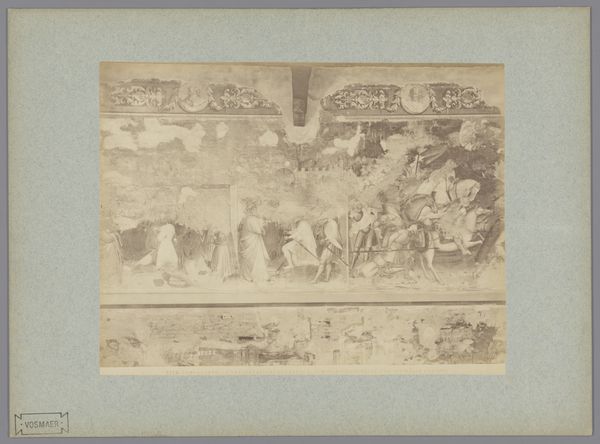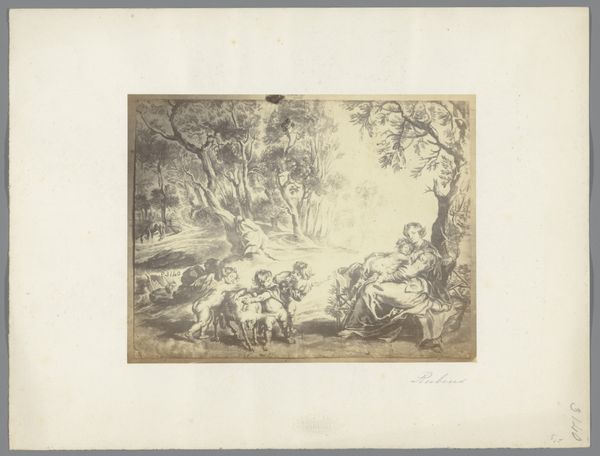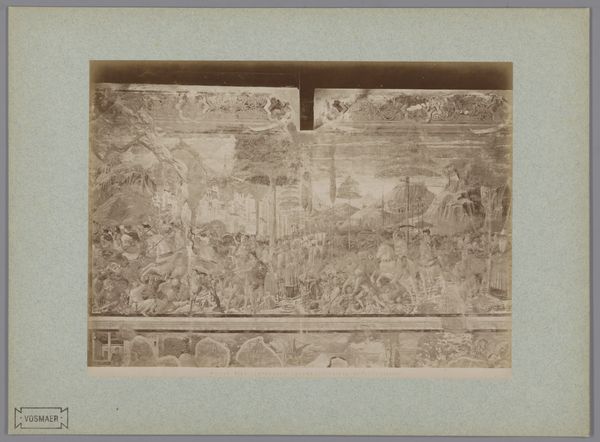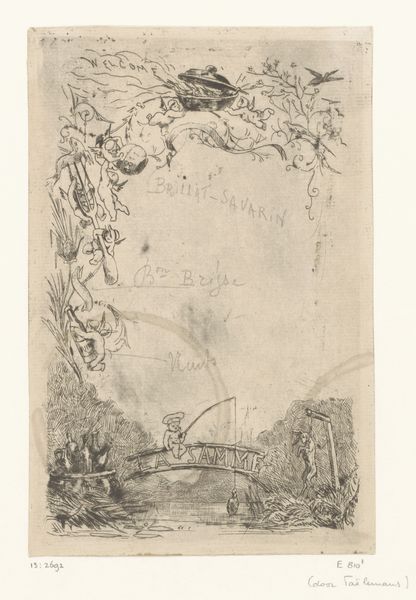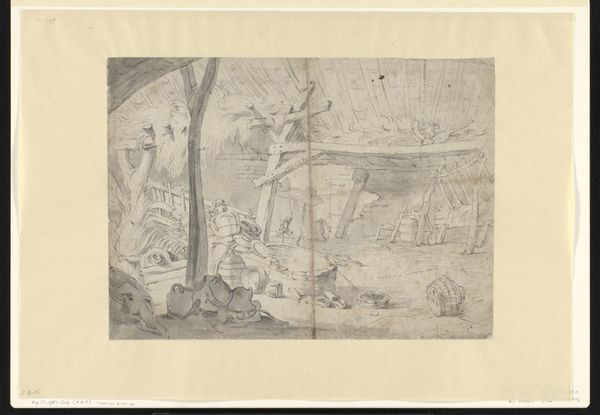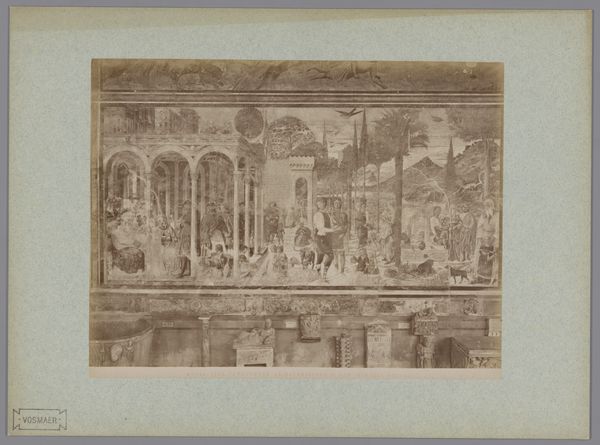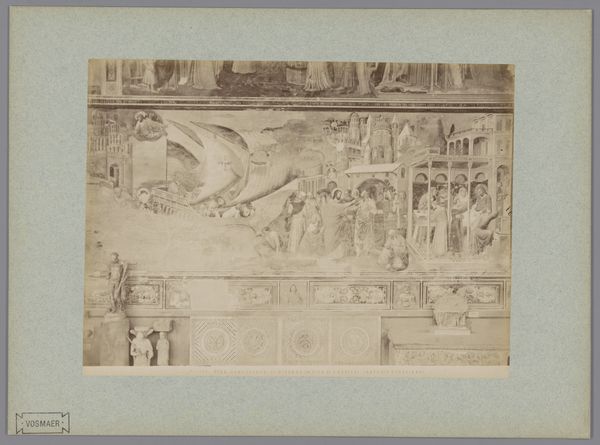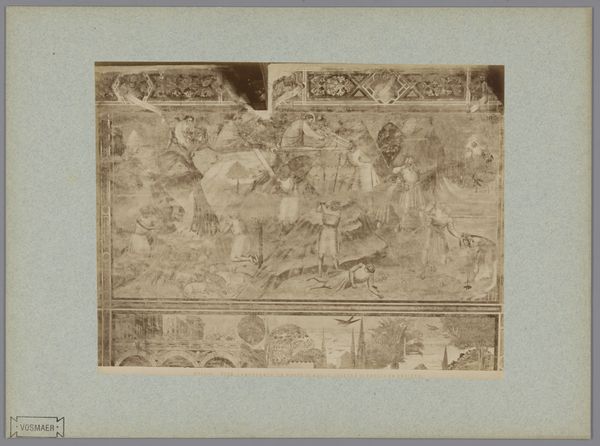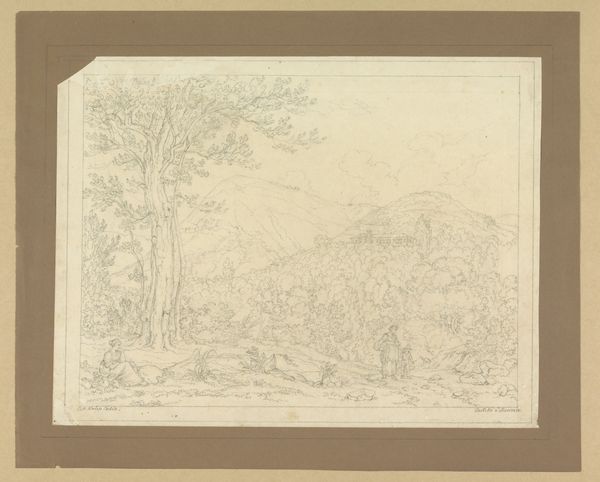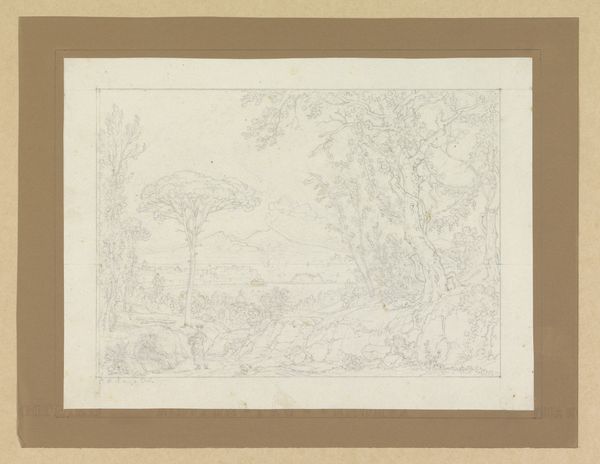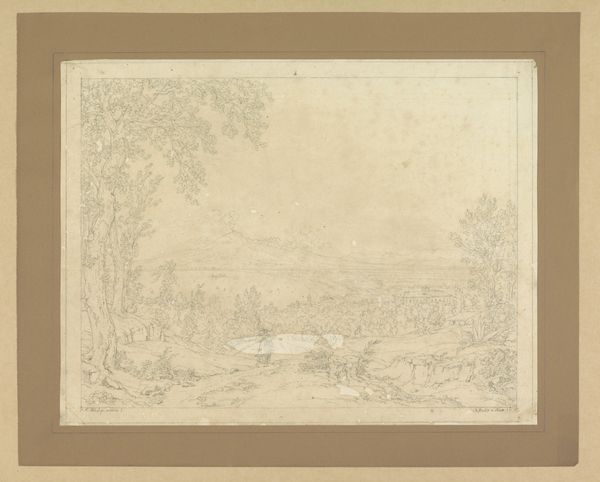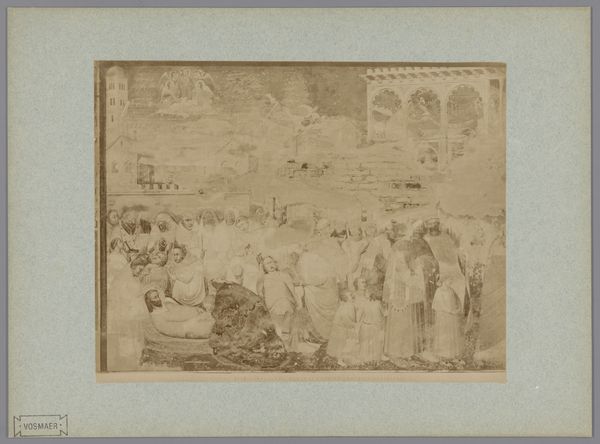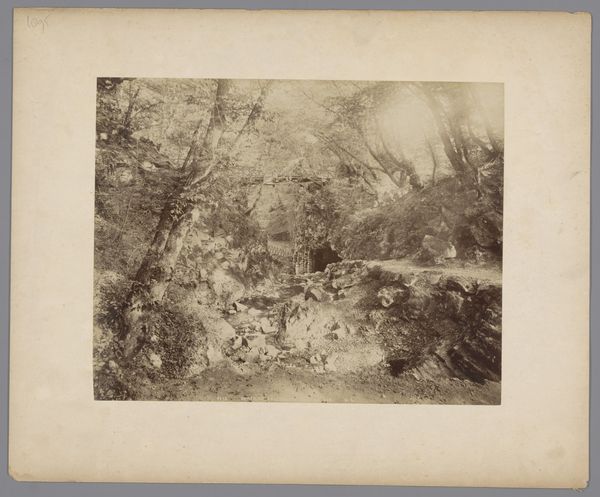
Fotoreproductie van het fresco De wonderen van S. Ranieri na zijn dood naar Antonio Veneziano in het Camposanto te Pisa, Italië 1857 - 1900
0:00
0:00
print, fresco, photography
# print
#
fresco
#
photography
#
ancient-mediterranean
#
history-painting
#
italian-renaissance
#
monochrome
Dimensions: height 189 mm, width 248 mm, height 261 mm, width 354 mm
Copyright: Rijks Museum: Open Domain
Curator: This photograph, produced by Fratelli Alinari between 1857 and 1900, captures Antonio Veneziano's fresco, "The miracles of S. Ranieri after his death," originally located in the Camposanto in Pisa, Italy. Editor: It's haunting, isn't it? The monochrome tones and faded details give it a ghostly feel. Even though it’s a copy, you sense the scale and drama of the original fresco—almost a panorama of suffering and wonder. Curator: Yes, and understanding its historical context is crucial. Veneziano painted this fresco during the Italian Renaissance, a period marked by a revival of interest in classical antiquity and a flourishing of artistic innovation. This particular work was commissioned to adorn the Camposanto, a monumental cemetery that itself holds profound historical and cultural significance. Editor: I immediately see figures arranged within what appears to be a decaying or damaged landscape, but even in this monochromatic rendition, I see the echoes of symbols—a possible shroud, vessels, figures rising, figures tending—I am wondering what miracles and symbology emerge. Curator: Considering it in relation to social history, we must acknowledge the patron. Frescoes like this served a didactic purpose. The pictorial elements underscore specific religious or political ideologies of the time, and reflect class structures. Editor: True. This echoes that need to present, almost propagandize, one's virtue. Curator: Precisely. Furthermore, this photograph speaks to the intersection of art, technology, and power in the 19th century. Photographic reproduction democratized access to art, yet simultaneously reshaped its meaning. This object reveals the power of documentation, but also the transformation of its content and the distortion of an image across mediums and contexts. Editor: Ultimately, regardless of the medium or patron or documentation, this captures human struggle and elation. The way visual hagiographies communicate collective needs, fears, and hopes is powerful across time. Curator: Indeed. Analyzing art objects such as these gives us a window onto shifting dynamics across centuries and into humanity's core. Editor: And images like these continue to spark our imagination even now.
Comments
No comments
Be the first to comment and join the conversation on the ultimate creative platform.
